There are cities that shimmer on water, their veins carved by ancient rivers and hopeful hands. Then there is Amsterdam, which does not merely shimmer but pulses — with memory, resilience, desire, and pride. Here, history flows alongside the Amstel, reflecting centuries of longing and liberation, casting ripples that reach far beyond her bridges. Amsterdam is a city that has long refused to dim its lights for anyone; its warmth is for those searching for a home, for a kiss in a shadowed doorway, for songs sung in the language of chosen families.
Reguliersdwarsstraat — tongue-twisting and unforgettable — is the artery at the glowing center of this heart. Step into this narrow, storied street, and you step into an ecosystem of queer joy: where each bar, each terrace, each rainbow crosswalk is an act of resistance and of celebration. Her cobblestones have known secret trysts and roaring parades; they have borne witness to the soft ache of love newly declared and the thunderclap of heels marching for rights yet fulfilled. This is not just a nightlife district, but a living, breathing archive — a place where laugh lines outnumber bruises, where wounds are remembered but healing is collective.
Amsterdam has always been more than a safe harbor; it is a vanguard. Homosexuality was decriminalized here in 1811; the legendary COC advocacy organization arose in 1946. The world’s first same-sex marriages were celebrated in her city hall. When threats and intolerance rose elsewhere, Amsterdam answered not with retreat, but with louder music, banners unfurled, and arms wide open. For some, queer history in this city is defined by bar doors thrown open to all; for others, it is the private solace of love that finally need not whisper.
In Reguliersdwarsstraat, the ghosts of disco, drag rebellion, and first kisses linger in the midnight air. This is where the ordinary transforms into the extraordinary — where bartenders remember your name and your heartbreak, where the street itself seems to exhale hope, and where the word “pride” is not a once-a-year pageant but a sustaining ember, burning every day and night.
Amsterdam’s Queer History: Milestones, Monuments, and Memory
The path to Amsterdam’s preeminence as a queer capital is neither straight nor easy. Centuries of repression gradually gave way to defiant visibility. In the 17th and 18th centuries, queer life existed in the margins — hidden, punished, and yet irrepressible. There are stories of same-sex lovers who dared to live authentically, of trans icons who braved suspicion and, at times, found quiet support within their families.
Amsterdam’s journey toward liberation was sparked by activism and solidarity: the founding of the COC in 1946, the early queer protests, the unveiling of the Homomonument in 1987 — the first of its kind in the world. The pink triangles at the Homomonument mark not only mourning but also persistence. In the nineties, with the rise of new freedoms and the birth of Amsterdam Pride (and its world-unique Canal Parade), the city became the “Gay Capital” — a place where you no longer had to hide, and where, for many, hope first began.
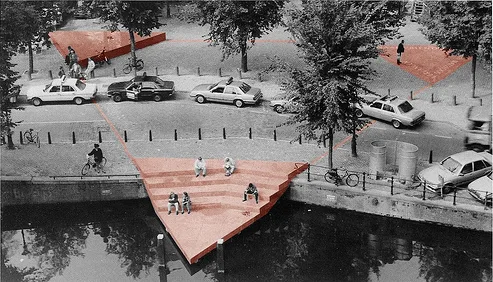
Amsterdam’s LGBTQ+ present is shaped by its past. Each Pride season in August is a reminder that visibility — loud, joyful, and defiantly public — remains a necessity. While the city’s heart beats for its own, it never forgets those who are still denied safety and love, here or anywhere in the world.
Reguliersdwarsstraat: The Pulse of Queer Nightlife
If Amsterdam is a city of freedom, Reguliersdwarsstraat is its queer epicenter: unabashed, jubilant, sometimes messy, always alive. In the surge of music and neon, you’ll find an openness that’s impossible to counterfeit. Night and day, the street is a chain of invitations: to dance, to commune, to simply be. From the heyday of the 1980s to the new era of blended identities and cultures, Reguliersdwarsstraat has never stopped evolving.
Decades ago, it was the home to legendary clubs and straight-edge resistance — a democratization of nightlife where all genders, bodies, and styles could converge and celebrate life unfettered. Icons such as Club Havana and Cafė April, pivotal in Amsterdam’s gay history, lent their spirits to the current of the street. Now, newer venues and revitalized classics keep the spirit alive through drag shows, block parties, and year-round hospitality.
There is an unmistakable sense as you walk down this street that you are walking in the footsteps of thousands — from protest to parade, first love to forever family. This is not just a neighborhood, but a thread in the tapestry of Europe’s queer resistance and creative joy.
The Heart of the Night: Profiles of Participating Venues
Each one is more than a bar or a club; each is a microcosm of welcome, an anchor for memory, a sanctuary for new adventures. These profiles are not listings, but love letters: to the spaces that keep our community alive.
Café The Queen’s Head
Zeedijk 20Hs, 1012AZ Amsterdam
There’s a magic in finding a real home where the city’s nerves are most electric: on the Zeedijk, at the Queen’s Head. This is not only one of Amsterdam’s iconic gay pubs; it is a longtime sanctuary where every night feels different and everyone can be the leading character in the evening’s unfolding story. In the golden glow of its lovingly over-the-top ’50s kitsch interior, beneath chandeliers and by canal views, regulars and wide-eyed travelers meet with the warmth of old friends.
What makes the Queen’s Head legendary? Let’s start with the infamous Drag Queen Bingo — a raucous, comic, and dazzling knees-up that takes over every Tuesday and has, over the years, become legendary in the city’s queer folklore. The bar’s central stage hosts more than bingo: rising drag stars, raucous open-mic comedy nights, karaoke for the bold and bashful, and DJs who turn the intimate space into a kaleidoscope dance floor.
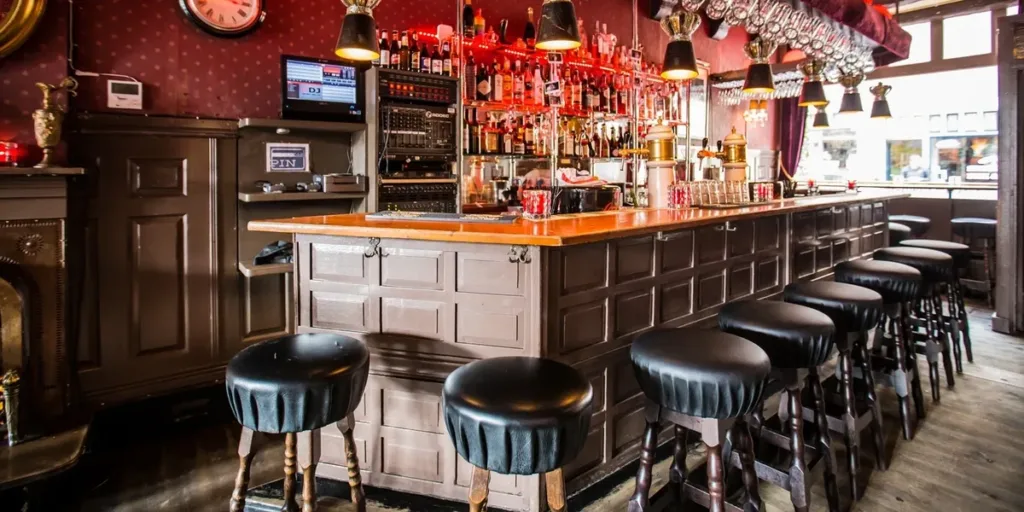
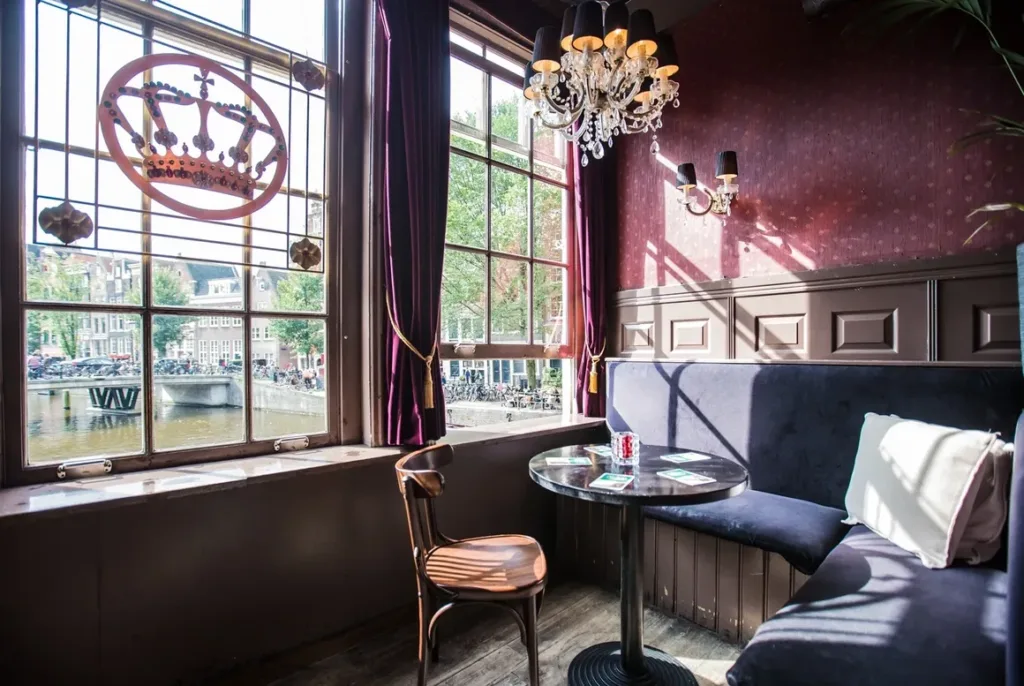
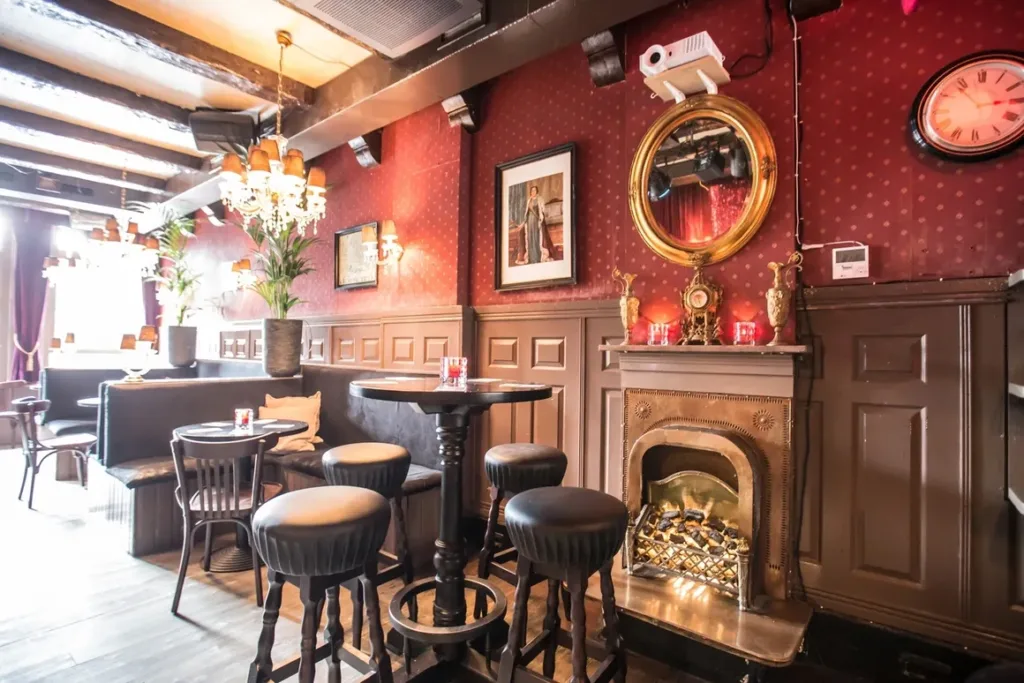
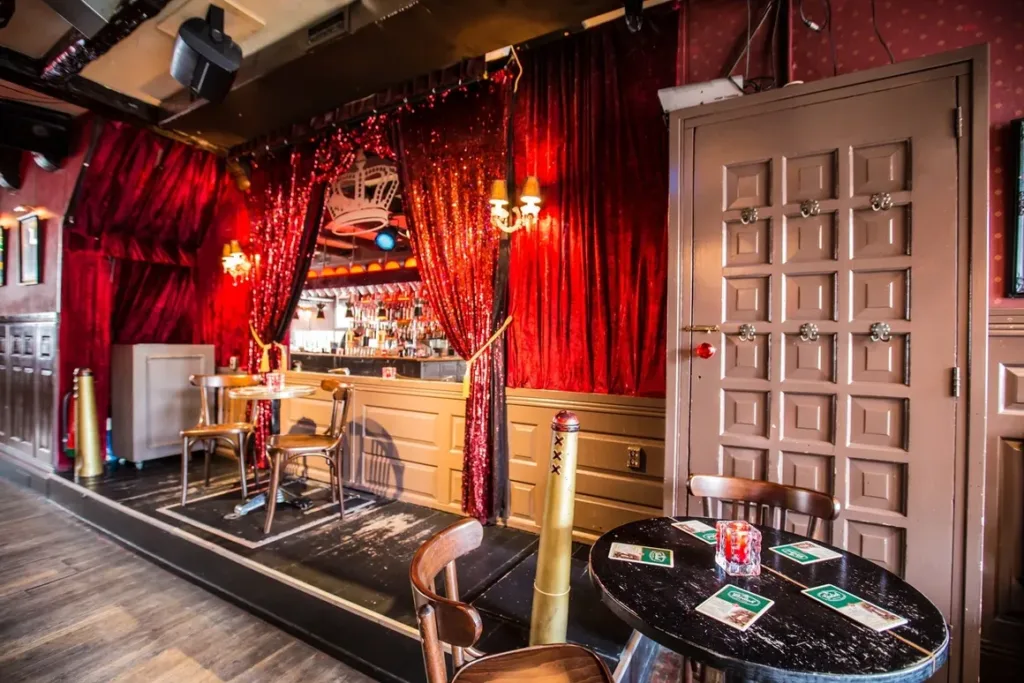
But beyond the glitz and the laughter, the Queen’s Head is often a first “welcome” and a last refuge. Staff are fiercely protective of the bar’s inclusive ethos — everyone is celebrated here: regulars who have been part of the fabric for decades, young travelers making tentative first steps into their queerness, locals simply seeking community, and even the occasional lost soul healed by a smile and a strong drink.
The Queen’s Head’s story is one of survival in a rapidly changing world. When the surrounding block’s queer venues began to fold, the Head stubbornly remained, ensuring the spirit of the Zeedijk’s rainbow legacy endures. Step in any night of the week, and you’ll find the bar throbbing with affirming energy — laughter rolling from the bingo stage, drag queens in full glow, music echoing off the canal. You may arrive a stranger, but you will leave as family.
Club Church
Kerkstraat 52, Amsterdam
The most sacred spaces are sometimes found where the rules of the outside world are gently — or riotously — set aside. For many, Amsterdam’s Club Church is hallowed ground: a queer “house of worship” where the congregation is welcomed in leather, lace, feathers, or nothing at all.
Club Church is many things: a dance club, a social laboratory, a boldly sex-positive venue, and — above all — a gathering place for the full spectrum of LGBTQ+ lives. Located just minutes from the Reguliersdwarsstraat drag of nightlife but entirely its own universe, it hosts an array of themed nights for the curious, the adventurous, the joyful, and the diverse.
Step through its ornately arched doors and you’re greeted by a main bar thrumming with conversation and anticipation. Beyond, vast dark rooms, fantasy spaces, and a dance floor that was once an altar (the building is a former chapel) now pulse to the rhythm of house beats and liberation. Theme parties range from underwear and nude nights to drag extravaganzas, queer performer showcases, and raucous, body-positive dance events. There are spaces for socializing, flirting, and exploring inner and outer limits in an environment where consent and comfort are paramount.
But Church is more than its reputation for adult fun — it is a refuge and home for sexually marginalized communities, a creative zone where drag families, trans collectives, migrants, sex workers, and fetish enthusiasts find joyful presence in one another’s company. The club is active in HIV awareness, queer activism, and educates with activism as much as with nightlife. At Club Church, everyone is welcomed into the mosaic of queer experience: locals, visitors, kinksters, poppers-and-disco lovers, romantics and rebels all mingle in a sanctuary designed not just for pleasure, but for possibility.
SOHO Amsterdam
Reguliersdwarsstraat 36, Amsterdam
In the neon swirl of Reguliersdwarsstraat, Soho is both constant and ever-changing — a place where the city’s spirit of togetherness materializes night after night. Embrace the buzz of the terrace or slide into the crowd indoors: Soho is the “living room” of Amsterdam’s queer nightlife, a bar and club where all are welcome, and each night is alive with a sense of being unmistakably part of something larger.
Soho’s magic is in its crowd — a diverse blend of locals, starters, travelers, trendsetters, old friends, and first-timers. Here, boundaries blur and inhibitions are left at the door. Perhaps you’ll start the evening with a classic cocktail amid the laughter of friends and the hum of anticipation. As the night stretches on, the energy builds: the main floor comes alive with DJs spinning everything from 2000s anthems to contemporary pop, while live performers — drag acts, burlesque, and surprise guests — periodically electrify the crowd with their bravado.
The staff at SOHO are known for being warm and exuberant, always attentive, never dismissive, and truly dedicated to making every guest’s experience memorable. Events range from themed parties (think: sultry Latin nights, Eurovision showdowns, Great Gatsby soirees) to improv nights, open dance jams, and community fundraisers.
What sets SOHO apart is a sense of welcome that is both deep-rooted and joyfully contagious: the dance floor becomes a site of spontaneous reunion, and regulars are as likely to embrace a visiting stranger as their closest friend. For many, SOHO is the first bar they remember feeling at home in; for others, it’s simply the place they return to when the world feels too heavy.
PRIK
Spuistraat 109, Amsterdam
PRIK is that secret, cozy bar you always hoped existed — welcoming, unpretentious, and quietly the soul of Amsterdam’s inclusive spirit. From the outside, it looks unassuming, set on a picturesque stretch of Spuistraat. Step inside, and you’re immediately enveloped by color, laughter, and the scent of something delicious (try the Dutch bitterballen if you’re lucky).
PRIK is renowned for its “no-nonsense” comfort: no cover charge, no attitude, no need for showy posturing. The vibe is laid-back yet lively, with a crowd as diverse as the city itself, united in a love of good company and creative cocktails. PRIK’s menu is famous for its unique, custom drinks (try the Strawberry Cheesecake or Dutch Pepper Bomb), and of course, “prik” — prosecco — literally on tap in both pink and white varieties.
As the week unfolds, PRIK offers a new tonight every night — a lazy Monday after shopping becomes a raucous mini-dancefloor by Saturday, while DJs bring hot pop and disco-diva energy to what was, moments before, a tranquil lounge. Weekend evenings, often packed to the rafters, are a swirl of music, drink, and joyful abandon — yet even at its wildest, PRIK never loses its sense of calm hospitality.
Perhaps most importantly, PRIK has earned a reputation as the “regular’s regular”: a place where queer folks and allies, young and old, women, men, gender-diverse people, and straight friends gather as equals. The staff are known for kindness, sharp wit, and an ability to make anyone — absolutely anyone — feel at ease.
Amsterdam’s Living Queer Culture: More Than a Scene
The city’s queer vibrancy is too big for any one district, bar, or festival. Beyond Reguliersdwarsstraat and the iconic venues, Amsterdam is a city of living, breathing LGBTQ+ networks: activist collectives, art spaces, drag houses, intersectional community initiatives, and heritage projects such as IHLIA LGBTI Heritage. Annual highlights like Pride’s Canal Parade, the Milkshake Festival, Roze Filmdagen (Pink Film Days), and the ever-expanding roster of drag, poetry, and ballroom events mean there’s always another story, another friend, another cause to celebrate or defend1618.
Queer Amsterdam is BIPOC, trans, intersex, non-binary, polyamorous, monogamous, romantic, aromantic, differently abled, neurodiverse, and more. The city is also not immune to struggles: gentrification, commercial pressures, and systemic discrimination remain live issues. Bars and clubs are only part of the story — real safety is built every day by activists, organizers, and neighbors themselves.
In clubs and on cobblestones, in activist meetings and open-mic nights, in sauna steam and behind the counter of every affirming business, Amsterdam continues to hum with the potential of chosen family. This is a city that honors its history by living bravely in the present — together, improvising the future.
Invitation: Add Your Voice, Shape the Story
Gayplomacy is a project of joyful connection. Across Europe, queer neighborhoods have always been more than static places — they are currents of people, stories, and dreams. They depend on collaboration: between venues, movements, artists, and travelers, between the city and its stewards, between those who are here and those yet to arrive.
If you wish to participate in this living map of queer Europe — as a venue, an artist, a neighbor, a traveler, an ally — get in touch. Collaboration is at the heart of Amsterdam’s history, as it is at the heart of gay history everywhere. By telling stories together, we resist erasure, we nourish community, and we ensure that the light in the windows, and on these pages, never goes out.
Share your stories, your spaces, your solidarity. Let Amsterdam be not only a destination, but a point of departure — for pride without borders, and for a Europe in which every street, every night, and every heart is home.